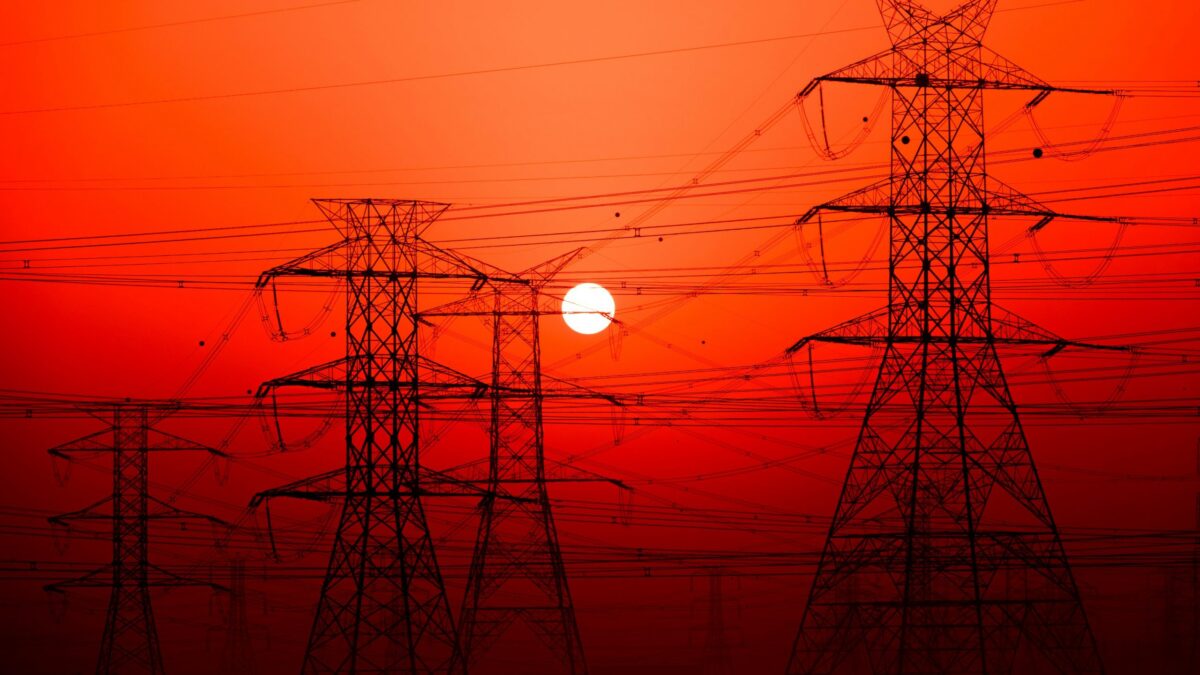The largest country in Europe without a nuclear power station, Poland took a giant leap towards speeding up its exit from coal this week when President Andrzej Duda signed a bill providing 60 billion złoty (around 14.4 billion euros) in financing for the country’s first nuclear power plant, which is being developed with US firm Westinghouse.
The numbers are eye-watering. The total cost of the project, which is due to sprout along Poland’s Baltic Sea coast, is estimated at around 200 billion złoty. If all goes to plan, the first reactors should hum into life by 2036, marking a radical change in Poland’s electricity generation—and indeed in its energy politics.
No longer willing to remain the region’s coal champion, Poland is staking its future on splitting atoms. Not everyone is applauding just yet. Warsaw still awaits the European Commission’s seal of approval for the state aid it wants to offer the scheme.
While a preliminary report last year found that Poland’s proposed aid was justifiable—in that the project would not proceed without public support—the Commission declared that it has “doubts” about the measure’s compatibility with EU State Aid rules, triggering an in-depth investigation.
Brussels is no stranger to atomic misgivings. Projects from Hinkley Point in Britain to Hungary’s expansion of its Paks power station have all faced prolonged wrangling at Commission headquarters.
Removing coal’s crown
Poland’s growing nuclear enthusiasm is set against the backdrop of the climate crisis and an economy deeply entwined with coal.
Successive Polish governments have been reluctant to push the country’s coal-exit date forward, lest they antagonise politically-potent mining communities. In 2020, some 70 per cent of Poland’s electricity came from coal. Yet change is in the air. By 2024, coal’s share of the electricity mix had already slipped to 57 per cent. Meanwhile, renewables—particularly solar—have soared to 28.8 per cent, a jump propelled by falling technology costs and the carrot of EU support.
Nevertheless, an agreement that keeps coal running until 2049 remains official government policy. Current Prime Minister Donald Tusk—returning to office in December 2023—has inherited that compromise and repeatedly affirmed it is binding, drawing groans from environmental campaigners.
Beyond Fossil Fuels, an influential pressure group, has labelled the 2049 timeline as “desperately late”, pointing to the 2030 deadline set out by the Paris Climate Agreement and highlighting that many European countries have pledged significantly earlier coal exits.
But delaying the funeral rites of coal is no small matter for Poland’s political class. Miners remain a formidable lobby, especially in industrial regions like Silesia, where entire towns draw their identity—and wages—from the mines.
Over the years, attempts to accelerate the coal phase-out have prompted heated protests, reams of strike threats, and even the odd occupation of government buildings.
The government’s vow to keep the 2049 date is widely seen as a cautious, if unpopular, balancing act: an attempt to appease the EU’s climate ambitions while dodging large-scale unrest at home.
Why nuclear matters
So, why the pivot towards nuclear, especially for a country that has historically stood at arm’s length from the technology? The reason is partly economic and partly environmental.
Poland’s industrial sector is vast, and powering heavy manufacturing without coal has proved tricky. Renewable capacity has grown, but wind and solar can be intermittent, requiring backup from stable baseload sources.
Natural gas is one such source, yet the volatility of global gas prices and concerns about overreliance on external suppliers—particularly Russia—have driven Warsaw to seek something more self-sufficient.
Poland’s dream is to replicate France’s success, where nuclear provides the bulk of the electricity mix, ensuring a relatively low-emission power system.
Crucially, nuclear power offers a low-carbon solution that can run reliably day and night, unaffected by whether the sun shines or the wind blows. It also fits snugly into the European Union’s net-zero timetable.
Recognising the challenges of dispatchable electricity (the ability to adjust power output on demand), the EU has gradually started placing nuclear on a green pedestal—albeit with caution and controversy. The Commission’s taxonomy of sustainable investments, published over the past few years, has included nuclear power under certain conditions, giving it a fresh veneer of environmental acceptability.
For Poland, the pursuit of atomic energy has become more than mere compliance with Brussels’ climate directives. It is also about forging energy independence, safeguarding the economy from the swings of global commodity markets, and attracting foreign investment.
Westinghouse’s involvement underscores the global dimension of the project, tying Polish ambitions to American know-how and, crucially, American financing. The 60-billion-złoty state support is but one financial pillar in a capital structure that will likely include multiple avenues, from private lenders to export credits.
Hurdles
Of course, forging a nuclear path is rarely smooth sailing. Poland faces myriad challenges, from ballooning construction costs to the complexities of site selection. Building a nuclear plant on the windswept Baltic coast might seem logical, given the ready supply of cooling water. But local environmental concerns and the expected protests from communities near the plant site could create fresh obstacles.
Beyond that, the spectre of nuclear waste—where to store it, how to transport it—looms large. Poland will also require a new generation of nuclear engineers, safety inspectors, and policymakers with the technical nous to oversee a project of this magnitude.
Another question is how quickly nuclear can come online to meet the urgent demands of climate policy. Poland has committed to the EU’s 2050 target of achieving net-zero emissions. The first nuclear reactors are scheduled to start operating by 2036, but new build projects almost always arrive late and over budget.
Critics argue that Poland should ramp up renewable deployment even faster, investing heavily in onshore and offshore wind (the latter benefits from the country’s Baltic coastline) and continuing the solar blitz.
In their view, nuclear is an expensive distraction that drains finances away from cheaper renewables. The government counters that it is not an either-or decision: nuclear provides steady baseload and renewables deliver a flexible grid. Both, it says, are critical to stamping out the last sparks of coal.
The cost of inaction
For those who doubt the urgency of ditching coal, a quick glance at Poland’s health statistics offers a sobering read. The country has the highest number of deaths attributable to air pollution in Europe—some 40,000 premature deaths every year.
Shockingly, it is also the only country in Europe where pollution-related deaths actually increased from 2015 to 2020, as sluggish policies struggled to keep pace with industrial and transport emissions. Nor are the environmental stresses limited to the air. Poland suffers from recurrent and increasingly severe droughts, which cost roughly 1.4 billion US dollars per year. And flooding, exacerbated by climate change, threatens 600,000 people and assets worth seven billion US dollars annually.
Just last September, parts of Lower Silesia in the country’s southwest were hammered by what meteorologists termed a “once in a century” downpour—except such floods are no longer quite so rare. Six months’ worth of rainfall crashed down in only a few days, resulting in nine deaths, thousands left homeless, and entire towns torn apart. Estimates put the cost of rebuilding at around 23 billion złoty.
In a major study published last year, the World Bank concluded that if Poland fails to adapt to climate change, the nation could face GDP losses of nearly 1.2 per cent by 2050—hefty sums for an economy still hustling to catch up with richer Western European neighbours.
On the flip side, the same report suggested that meeting the EU’s net-zero goal by 2050 could add up to four per cent cumulative GDP growth, not least from new green industries.
Improved air quality alone, the World Bank noted, might yield health benefits worth 1.4 per cent of GDP in the same time frame. In other words, investing in green energy—and yes, that includes nuclear—might help Poland’s ledger in more ways than one.
The road ahead
Poland’s nuclear bet, then, is equal parts ambition and necessity. As the largest economy in central and eastern Europe, it bears the region’s standard for decarbonisation.
The nuclear story is an opportunity to leapfrog into a cleaner energy future, sidestepping the pitfalls of overreliance on gas or patchwork renewables. If the project goes smoothly—and that’s a big if—it could transform Poland from a coal stalwart into a champion of modern, low-carbon growth.
Yet there are caveats at every turn. The Commission’s ongoing investigation into state aid could stall the timetable. Construction overruns, cost escalations, and local opposition could all slow progress. And then there is the political dance with miners and coal communities, which will require sensitive handling if Poland is to avoid domestic strife.
Nonetheless, the pendulum is swinging away from coal. This week’s financing bill signals that Warsaw, long wary of ditching its black gold, is finally ready to bet on nuclear.
Whether that bet pays off may define not only Poland’s energy mix, but its economic future—and possibly its political cohesion—for decades to come.
Photo by Dhahi Alsaeedi on Unsplash.







